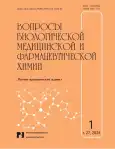Development of approaches to the analysis of elemental impurities in titanium dioxide (barium and lead definition)
- Authors: Paskar I.V.1, Senchenko S.P.1, Kapiturova O.A.1, Borkovskaya E.V.1, Troshin V.A.1, Paskar N.G.2
-
Affiliations:
- LLC Test Centre «FARMOBORONA»
- I.M. Sechenov First Moscow State Medical University (Sechenov University) of Ministry of Health of the Russian Federation
- Issue: Vol 27, No 1 (2024)
- Pages: 31-39
- Section: Pharmaceutical chemistry
- URL: https://journals.eco-vector.com/1560-9596/article/view/625484
- DOI: https://doi.org/10.29296/25877313-2023-12-04
- ID: 625484
Cite item
Abstract
Relevance. Due to its properties, substance of titanium dioxide is still widely used in the pharmaceutical industry as a drug excipient. However, from the point of view of the safe use of any component of drugs, one of the most important factors is the determination of its content of elemental impurities (PE). The pharmacopoeic requirements for titanium dioxide to contain elemental impurities are not harmonized today. It was therefore advisable to develop approaches to defining them under the strictest of standards.
Research objective. This work is devoted to the development of approaches to the analysis and further validation of the method of determination of antimony in the substance titanium dioxide at the level of 2 ppm.
Material and Methods. The method used in this paper is based on the extraction into the organic phase of ionic associates, in which the halogen complex SbCl6-antimony acts as an anion and interacts with the triphenylmethane dye - diamond green. All the reagents and materials used were pharmacopoeic. A sample of titanium dioxide, produced by Venator Germany GmbH, Germany, was used as the research object. The validation of the methodology was carried out in accordance with the requirements of the SP RF on the following characteristics: specificity, linearity, LOQ, correctness, repeatability, intralaboratory precision and range of methods.
Results. The article shows applicability of the method of determination of antimony in the substance titanium dioxide, at the level of 2 ppm, using as a reagent diamond green. At the same time, the validation evaluation of the methodology showed that the obtained results met the criteria of acceptability for all the studied characteristics.
Conclusions. Control of PE is an important aspect of the safe use of any component of the drug.
Due to the wide variety of pharmacopeic requirements for PE content in the substance TiO2, this study shows the possibility of using the extraction and photometric method with the use of a triphenylmethane dye (diamond green) to determine Sb at the most stringent standards (2 ppm).
At the same time, the validation of the methodology on such characteristics as specificity, linearity, LOQ, correctness, repeatability, intralaboratory precision and range confirmed the possibility of quantitative estimation of Sb content in the substance TiO2 in the range of 50% (LOQ) up to 150% of the specification level.
Keywords
Full Text
About the authors
I. V. Paskar
LLC Test Centre «FARMOBORONA»
Author for correspondence.
Email: paskar_irina@farmoborona.ru
Ph.D. (Pharm.), Managing Director
Russian Federation, KorolevS. P. Senchenko
LLC Test Centre «FARMOBORONA»
Email: senchenko_sergey@farmoborona.ru
Dr.Sc. (Pharm.), Associate Professor, Head of Department of Analytical Methods Development
Russian Federation, KorolevO. A. Kapiturova
LLC Test Centre «FARMOBORONA»
Email: kapiturova_olga@farmoborona.ru
Head of the Analytical Laboratory
Russian Federation, KorolevE. V. Borkovskaya
LLC Test Centre «FARMOBORONA»
Email: borkovskaya_evgeniya@farmoborona.ru
Ph.D. (Chem.), Chemist of Department of Analytical Methods Development
Russian Federation, KorolevV. A. Troshin
LLC Test Centre «FARMOBORONA»
Email: paskar_irina@farmoborona.ru
Pharmacist of Department of Analytical Methods Development
Russian Federation, KorolevN. G. Paskar
I.M. Sechenov First Moscow State Medical University (Sechenov University) of Ministry of Health of the Russian Federation
Email: paskar_irina@farmoborona.ru
Student
Russian Federation, MoscowReferences
- Paskar' I.V., Senchenko S.P., Kapiturova O.A., Bor-kovskaja E.V., Troshin V.A., Paskar' N.G. Razrabotka podhodov k analizu jelementnyh primesej v substancii titana dioksida (opredelenie mysh'jaka). Voprosy biologicheskoj, medicinskoj i farmacevticheskoj himii. 2023; 26(11): 19–26.
- Paskar' I.V., Senchenko S.P., Kapiturova O.A., Borkovskaja E.V., Troshin V.A., Paskar' N.G. Razrabotka podhodov k analizu jelementnyh primesej v substancii titana dioksida (opredelenie sur'my). Voprosy biologicheskoj, medicinskoj i farmacevticheskoj himii, 2023; (12): 32–39.
- Racovita A.D. Titanium Dioxide: Structure, Impact, and Toxicity. Int J Environ Res Public Health. 2022 May 6; 19(9): 5681.
- Blundell R., Butterworth P., Charlier A., et al. The Role of Titanium Dioxide (E171) and the Requirements for Replacement Materials in Oral Solid Dosage Forms: An IQ Consortium Working Group Review. J Pharm Sci. 2022; 111(11): 2943‒2954.
- Vazhnaja rol' titana dioksid v farmacevtike. https://www.tdma.info/uses-of-titanium-dioxide/the-essential-role-of-titanium-dioxide-in-pharmaceuticals/.
- EP 10.5 «TITANIUM DIOXIDE» (07/2021:0150).
- EP 11.2 «TITANIUM DIOXIDE» (07/2023:0150).
- USP–NF 2022 «Titanium Dioxide».
- BP 2020 «Titanium Dioxide» (11-1154, V-A152).
- JP XVII Titanium Oxide.
- EP 10.8. 2.4.20 «DETERMINATION OF ELEMENTAL IMPURITIES» (07/2018:20420 corrected 9.6).
- GF RF FS.2.2.0017.15 «Tal'k».
- Huang, Chaozhang, Bin Hu, Zu-cheng Jiang. Simultaneous speciation of inorganic arsenic and antimony in natural waters by dimercaptosuccinic acid modified mesoporous titanium dioxide micro-column on-line separation and inductively coupled plasma optical emission spectrometry determination. Spectrochimica Acta Part B: Atomic Spectroscopy. 2007; 62: 454‒460.
- Xiao Y., Ling J., Qian S., et al. Preconcentration of trace arsenite and arsenate with titanium dioxide nanoparticles and subsequent determination by silver diethyldithiocarbamate spectrophotometric method. Water Environ Res. 2007 Sep; 79(9): 1015‒22.
- Hagarová, Ingrid, Peter Matúš, Marek Bujdoš, Jana Kubová. Analytical application of nano-sized titanium dioxide for the determination of trace inorganic antimony in natural waters. Acta chimica Slovenica 2012; 59(1): 102‒108.
- GF RF OFS.1.1.0012.15 «Validacija analiticheskih metodik».
Supplementary files






